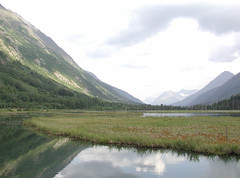 This is one last post by EWG social media intern Akua, who wrapped up her internship here this month. We wish her the best of luck!
This is one last post by EWG social media intern Akua, who wrapped up her internship here this month. We wish her the best of luck!
The Bureau of Land Management, an agency responsible for the management of federal public lands in the United States, has proposed a 10-year ban on oil drilling in the 430,000 acres north and east of the Teshekpuk Lake in the National Petroleum Reserve in Alaska. The region is home to many bird species as well as over half a million caribou during their migration period. While hailed as a win by many environmentalists, this celebration is somewhat obscuring a larger issue: The territory under protection holds about 800 million barrels of oil; the entire region holds an astounding 2.8 billion barrels of oil.
Essentially this means that while the most sensitive area in the region is being protected under a short-term ban, the proposal essentially opens up many more parts of Alaska for oil drilling. I was originally shocked by the Bush Administration’s sudden decision to embrace a conservation effort, but giving up this coveted piece of land appears to be more of a public relations move than one of genuine concern for the region. If you read the Bureau of Land Management’s official statement on the issue, we don’t seem to be getting that great of a deal. The land being temporarily given up for conservation seems to be just crumbs from a banquet in comparison to the amount of oil that will be made available to companies to lease through the deal.
Also, the ban on mining in the 430,000 acres is only for 10 years -- after which it becomes possible for companies to lease the area for drilling. If the bureau were truly motivated by a desire to conserve the area and protect the Teshekpuk Lake it would turn this ban into law.
Photo: Tern Lake, Alaska by Anita Gould.